I made a comparision between TuFuse with default parameters vs SNS-HDR Lite for HDR tone mapping.
To capture the entire dynamic range of the scene I used 5 shots 2EV apart:
Just the central 3 shots could have been used. The outdoor highlights would have got blown a bit and the deep shadows would have become a bit less noisefree, but the final result would have been almost as good.
The RAW files were optimally fused using Zero Noise. The gray tones in the following blending map indicate the source RAW used for every image area:
The resulting image histogram reveals about 13,5EV of dynamic range (the highlights peak corresponds to the tungsten lamps and their reflections):
To do the automated tone mapping, several replicas of the ZN image were fed into TuFuse and SNS-HDR Lite. The resulting image with default parameters was finished with a standard contrast curve:
Both programs respected the colours of the initial image, SNS-HDR saturating a bit. However regarding local contrast TuFuse produced a more natural result while SNS-HDR obtained more texture where available, resulting a bit more unreal. In both lighting was kept reasonably natural, without producing visible inconsistencies like those usually found on Photomatix tone mapped images.
Finally just a proof of the need of doing several shots to cover the entire dynamic range, showing the noise comparision between the most exposed shot that preserved the highlights and the final fused image:
Regards
 Helpful Posts: 0
Helpful Posts: 0
Results 1 to 10 of 10
-
22nd March 2010, 09:36 PM #1

- Join Date
- May 2008
- Location
- Madrid (Spain)
- Posts
- 169
Tone mapping comparision: TuFuse vs SNS-HDR
-
22nd March 2010, 09:45 PM #2
Re: Tone mapping comparision: TuFuse vs SNS-HDR
Amazing Guillermo,
Personally, I think I prefer the SNS version for the extra texture, local contrast and saturation.
One day I'll have to give this a try, but don't hold your breath
-
23rd March 2010, 11:39 AM #3
Re: Tone mapping comparision: TuFuse vs SNS-HDR
What are the advantages of using this automated workflow over the manual way (other than speed)? By that I mean "merge to HDR" feature in Bridge to photoshop and using photomatix. The time taken to "manually" do a HDR image is not that long so the time saved is rather marginal IMO. However, I believe it produces noticably better images.
Thanks for sharing your knowledge with us, GUI!
-
23rd March 2010, 06:52 PM #4

- Join Date
- May 2008
- Location
- Madrid (Spain)
- Posts
- 169
Re: Tone mapping comparision: TuFuse vs SNS-HDR
Well I would never call 'manual' the HDR blending and tone mapping performed by PS or Photomatix. They are automated tools plenty of sliders so that little effort has to be done to reach the final image. However I never managed to get a pleasant image out of Photomatix. PS HDR is a bit better, but again not good enough for me (impossible to avoid ghosting on it, and when there is a big exposure gat between the source images, it performs wrong relative exposure calculations). Both tools are far from the realistic look of TuFuse/Enfuse blending algorithm.
Regards
-
24th March 2010, 08:16 AM #5
Re: Tone mapping comparision: TuFuse vs SNS-HDR
That's why manual is in inverted commas.

I beg to differ. I honestly cannot detect any ghosting in most of the HDR images I took, unless the objects in the picture (eg. leaves) are greatly dispaced from each shot. I'm not sure about PS making wrong relative exposure calculations though... But shouldn't it be simple to correct this? Unlike your past experience with PS, I have been able to produce rather realistic looks with this program."However I never managed to get a pleasant image out of Photomatix. PS HDR is a bit better, but again not good enough for me (impossible to avoid ghosting on it, and when there is a big exposure gat between the source images, it performs wrong relative exposure calculations). Both tools are far from the realistic look of TuFuse/Enfuse blending algorithm."
This is an example I took today for sharing. I only used ps cs4. Please ignore poor composition etc.Last edited by Blazing fire; 24th March 2010 at 08:31 AM.
-
24th March 2010, 08:39 AM #6
Re: Tone mapping comparision: TuFuse vs SNS-HDR
One more. This photo may not require HDR bracketing, but I chose to do it to retain detail in the furniture (seen in the second pic)
I don't think they look too unrealistic... What do you think?Last edited by Blazing fire; 24th March 2010 at 08:46 AM.
-
24th March 2010, 07:48 PM #7
Re: Tone mapping comparision: TuFuse vs SNS-HDR
Hi,
I will soon make available an update for the SNS-HDR Lite with improved tone mapping algorithm. You can now test the new version of the algorithm, generating the HDR image in SNS-HDR Pro at the default settings.
Regards
-
25th March 2010, 10:22 PM #8

- Join Date
- May 2008
- Location
- Madrid (Spain)
- Posts
- 169
Re: Tone mapping comparision: TuFuse vs SNS-HDR
Just try to fuse these two RAW files using PS:
http://www.guillermoluijk.com/download/mov1.cr2
http://www.guillermoluijk.com/download/mov1.cr2
- It calculates a relative exposure of 4.26EV, when the correct one is 4.36EV.
- It produces wrong colours because of partial saturation.
- It produces ghosting (cutting the legs and suitcase of the man).
- It performs progressive blending, making the final image noisier than it could be, and less sharp in the overlapped areas

If you try Photomatix the result is even funier:

With a more appropiate workflow:
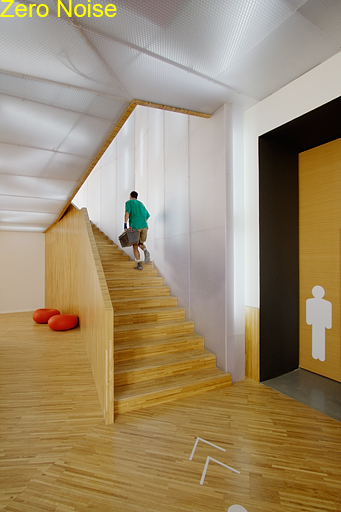
Regards
PS: one could argue two shots are not enough, or that 4 1/3EV apart in exposure is too much for HDR blending. Both arguments are wrong (the Zero Noise image above proves this): most HDR situations can be perfectly solved with just 2 shots, and 4EV apart is not at all too much. The problem is in the software around: it is very sub-optimum in the information blending stage. Taking more shots and making them be 2EV or less apart, is not a requirement for HDR, but for particular HDR sub-optimum tools such as Photomatix and PS HDR.
Non-blown highlights and noisefree shadows is all we need to solve any HDR scene, and was achieved with just 2 shots 4 1/3EV apart:

Last edited by _GUI_; 25th March 2010 at 10:44 PM.
-
26th March 2010, 01:16 AM #9
Re: Tone mapping comparision: TuFuse vs SNS-HDR
Thank you GUI for providing a comprehensive explaination. It has dispelled my confusion about such fully automated HDR software and has proven PS's inferiority. My previous experience with Enfuse was not satisfactory as it did not manage to align handheld HDR images, while PS could. I thus only used PS for future HDR work.
What really surprises me is the ability of Tufuse and SNS to handle non-static objects so well.
Do TuFuse and SNS also provide auto alignment for handheld HDR shots?
-
26th March 2010, 03:29 PM #10

- Join Date
- May 2008
- Location
- Madrid (Spain)
- Posts
- 169
Re: Tone mapping comparision: TuFuse vs SNS-HDR
No no, I didn't explain well. The fusion process in the stairs image was performed using Zero Noise, that allows manual masking to totally eliminate ghosting artifacts in moving parts. Upper image is standard Zero Noise output, second image after manual edition of the fusion map:
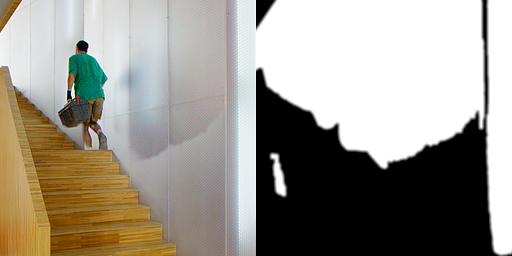
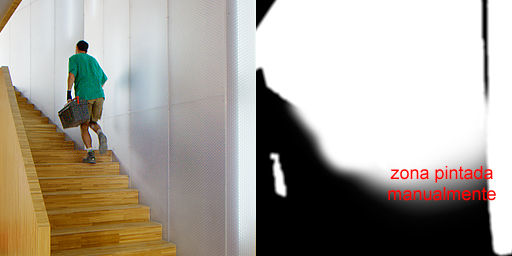
If the original source images were fed into TuFuse or SNS-HDR, ghosting appears:

In this case transparent ghosting rather than leg-cut ghosting as with Photomatix and PS. This could indicate that TuFuse and SNS-HDR are even more progressive than Photomatix or PS. This is bad news for noise and sharpness optimisation in TuFuse and SNS-HDR.
That is why I always use Zero Noise for the fusion process. Then I can choose any tone mapping tool, knowing that the image will be as noisefree and sharp as possible, and ghostingfree.
RegardsLast edited by _GUI_; 26th March 2010 at 06:14 PM.



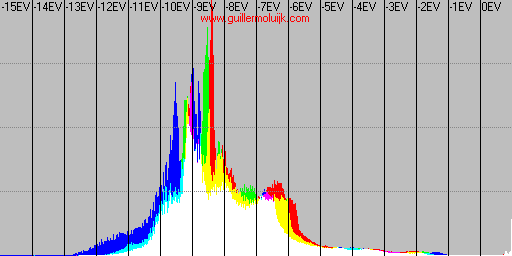
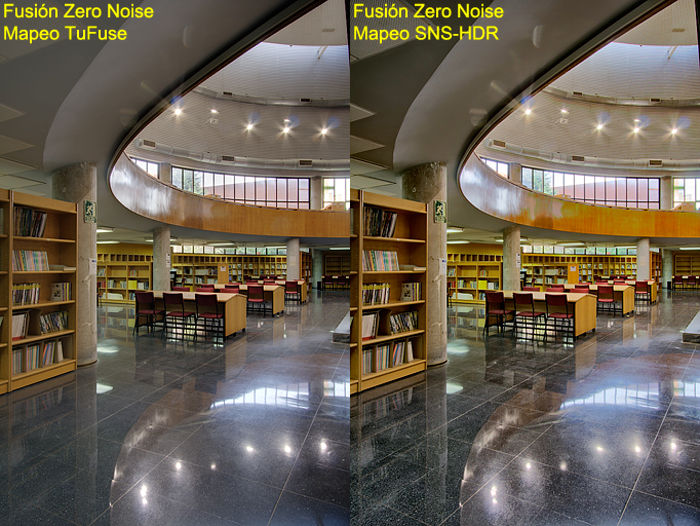


 Reply With Quote
Reply With Quote

